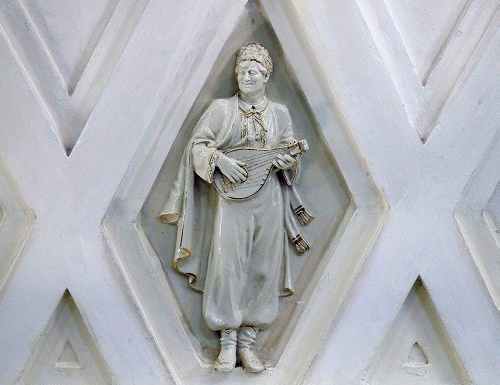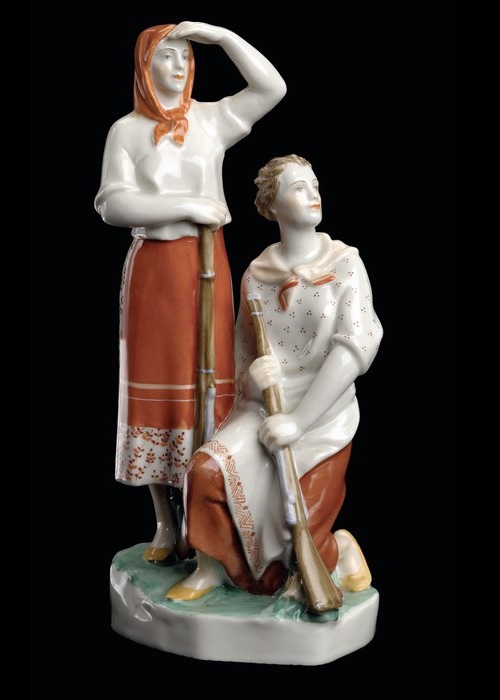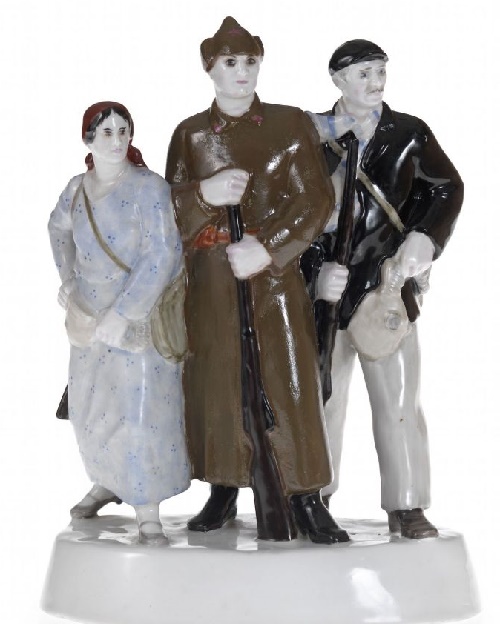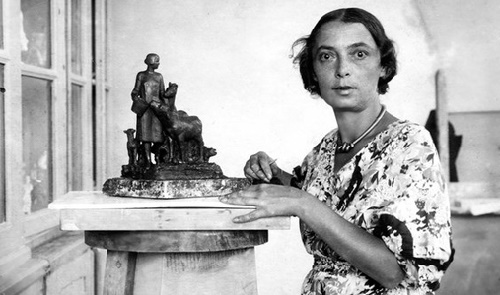Soviet sculptor-ceramist Natalya Danko 1892-1942
Soviet sculptor-ceramist Natalya Danko (1892-1942) entered the history of Soviet propaganda porcelain as one of the most remarkable sculptors. For twenty-five years of creative work she has created more than three hundred figures and compositions. In particular, thematic sculptures, satirical, portrait and decorative, not counting options made in bronze, terracotta, wax and earthenware. Also, Natalia was one of the first Soviet sculptors to use porcelain in architecture. Noteworthy are 14 bas-reliefs on the theme “Dances of the Peoples of the USSR” for the metro station “Sverdlov Square”. In addition, under her leadership, a team of sculptors and artists of Leningrad porcelain factory performed porcelain bas-reliefs for the Khimki river station in Moscow (1937-1938).
Born in Tiflis into the family of railway employees – Yakov Afanasievich and Olga Iosifovna Danko, Natalya spent her childhood in Moscow. Aged eight she entered the Stroganov Art College in Moscow (1900-1902). Then she studied in various private studios, including workshops of Yalmar Jaanson in Vilna (1906 to 1908). Then, she moved to St. Petersburg to study in the workshops of L. V. Sherwood and V. V. Kuznetsov (1908-1909). In 1909-1914 she worked mainly in St. Petersburg, engaging in sculptural decoration with architects VA Shchuko, IA Fomin and others. In 1911 she performed sculptural decor at exhibitions in Rome and Turin. Since 1914, together with V. Kuznetsov, she worked in the sculpture workshop of the Imperial Porcelain Factory in Petrograd. And already in 1919 she became the head of the sculptural department of the plant.
In total, Natalia Danko has created more than 300 sculptural works. The most famous of them are the Red Army soldier, the Worker embroidering the banner, The Sailor (1919), The Militia woman (1920), The Loaders, The Fortune-Teller, The Famine, The Chess (1922), “Worker”, “Woman with a sheaf” and others. Natalia also created such portrait figures as Nijinsky, Fedorova II, Anna Akhmatova, and Meyerhold (1935). Interestingly, many early works were painted by Natalia’s sister – Elena Danko – a Russian writer, poetess and artist.
During the Great Patriotic War, Natalya Danko was in besieged Leningrad. In late February 1942, together with her sister and mother evacuated to the city of Irbit. Unfortunately, on the way because of the consequences of exhaustion, the sister and mother died. Natalia Danko herself died on March 18, 1942, shortly after arriving in Irbit.
The composition “Discussion of the draft of the Stalin Constitution on the collective farm of Uzbekistan” includes 6 items: the central part – the inkwell “Universal and Equal Suffrage”, the ashtray “The right to rest”, the pencil holder “The right to rest”, the tray “The right to work”, the vase “The right to education”, and the lamp “Folk singers”. The ink device is devoted to the adoption of the Constitution of the USSR in 1936 (the Stalin Constitution). The draft constitution of the USSR was broadcast on the radio, published in all the newspapers of the country, as well as in separate brochures in 100 languages of the peoples of the USSR with a circulation of over 70 million copies.
Soviet sculptor-ceramist Natalya Danko

Agitation pencil holder from the ink device ‘Discussion of the draft of the Stalin Constitution on the collective farm of Uzbekistan’, Leningrad porcelain factory 1930s
sources:
Soviet Art Gallery public group vk.com/club75441027
Danko. Yuliya Ebin, 1955 Publisher: Art, series Art































































